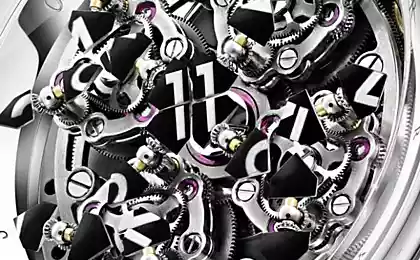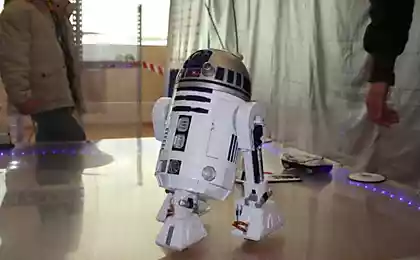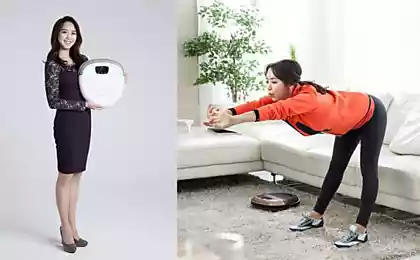720
Amazing boy robot age of 250 years and is now working

After more than 200 years, Jaquet Droz of La Chaux-de-Fonds, the district center of Canton Neuchatel in Switzerland, resumed production of "automatons", large mechanical dolls, called by the name of watchmakers of the family Draw. But let's remember how it all began.
This is "the Writer", the clock automatic mechanism, which was created in 1770-ies of the famous watchmaker of Swiss origin, Pierre Jaquet-Droz. A mechanism was designed to record words and sentences up to 40 characters. In spite of such a serious age, the mechanism works fine to this day, shocking everyone with its complexity.
Imagine what it means to create a mechanical machine that can write in 1770? This is a great event ahead of time. In addition, we can't even imagine how much time it took the creators of this mechanism, how much patience and ingenuity was necessary to achieve the desired result.

Pierre Jaquet Droz, a famous watchmaker and engineer, was born in 1721 on a small farm Sur-Le-Pont, located in the vicinity of the town of La Chaux-de-Fonds (La Chaux-de-Fonds). It marked the beginning of one of the most prestigious brands and became a skilled Creator of the animated clock with singing birds and fountains, musical clocks, as well as automatic mechanisms — automaton.
From 1738 to 1747 years, Pierre Jaquet Droz engaged in watchmaking mechanics. He produced a series of grandfather clocks with highly complex mechanisms, which are superior in their characteristics then the existing analogues. Then, Pierre Jaquet Droz began to incorporate into their clockworks module music playback.
And once again, Pierre Jaquet Droz became acquainted with my Lord Marechal, Governor of the Principality of neuchâtel, who advised him to show his mechanical masterpieces abroad, particularly in Spain, where the Lord could help him to arrange a meeting with the king.
With his support, Pierre Jaquet Droz together with the father and the young worker Jacques Gerilim make a special tent, in which were placed six of the pendulum clock, and in 1758 went to Spain. Pierre Jaquet Droz was allowed to show their creations to the king of Spain Ferdinand VI. This presentation was a real triumph of the master – the monarch and the courtiers were amazed by a clock that tolled the hour automatically, without any intervention from the outside.
A few days later master got 2000 gold pistols: all of them watches were purchased at once for the Royal palaces of Madrid and Villaviciosa...
It was an impressive sum, that Pierre Jaquet Droz on his return to La Chaux-de-Fonds in 1759 was able to devote himself entirely to the manufacture of pocket and table clocks, as well as the creation of the famous automaton. In doing so, he helped son Henri-Louis and Jean-frédéric Leso – the neighbour's son.
Since 1773, the family company Jaquet Droz and Lesa produces more and more sophisticated automatons. The highest degree of skill have been achieved by manufacturing three of the dolls-automatons: the Calligraphy of the Artist and the Musicians.
The first automatic doll Pierre-Jacque DRO made in 1773. Android was called "the Writing boy" and was a sitting doll, the size of a five year old child. The body of the "automaton" was made of wood the head made of porcelain, the manufacture of watchmaker took 20 months. Clockwork boy brought a quill pen on a clean sheet of paper phrase (something like "I love you, my city" or "Pierre-Jacque DRO — my inventor"), soaked paperweight ink, gazed thoughtfully written, and then threw the piece of paper again and began to write. The premiere of "the Boy" Draw staged in Paris in 1774, at court just ascended the throne of Louis XVI "alive" doll has caused a stir.

After "Boy" Draw along with his son Henri made two more dolls — "Draftsman" and "Musician". "Painter," almost indistinguishable from "the Writing boy." He also sat behind a wooden Desk, dressed in a red coat, pants and a white shirt with a frill. However, the "Draughtsman" was not written phrases, and drew a pencil on paper dog and was signing his picture — "My tutu" ("Mon Toutou"; dog tutu was a favorite of the previous French king Louis XV).
"Musician" was more complex clockwork figure, it worked for three of watchmaker — father and son Draw and Frederick Leso. "Musician" was bigger than "Boy" and "Painter" — about the size of an eight year old. "Musician" was dressed in a crinoline with a bodice decorated with bows. "Musical" a woman was sitting behind a real, but very tiny, harpsichord, and could do it five songs — before the "musician" lay notes.
Their presentation was held in La Chaux-de-Fonds in 1774.

In the mechanism of the Writer is present in chamber technology. An important role in the mechanism play Cams toys because they control not only the pen strokes, and the pressure level of the paper.
Another amazing feature of the mechanism is that the Writer is able to keep an eye out for words which he reproduces. The complexity of the mechanism incredible. How is the entire process described above, you can see in the video clip below.
The mechanism consists of about 6 000 parts, each of which is handmade, miniature and adapted to fit in a toy body. Thanks to technology. Used by the Pierre Jaquet-Droz, the mechanism requires no external source of energy for their functioning. The mechanism itself produces the necessary power for operation.

These three genuine masterpieces, which have attracted all the lovers of fine mechanics, confirmed the reputation of Pierre Jaquet Droz became the guarantor of the prosperity of his enterprise. Such a huge success finally convinced Jaquet Droz in need to submit their masterpieces to the world. From La Chaux-de - Fonds automatons went to Geneva, then, in 1775, to Paris where they were shown to Louis XVI and Marie-Antoinette. After that, a humanoid doll visited all the major Royal courts of Europe, including London, Holland, Flanders (in 1780-1781 year) and in the North of France.

The brightest representation about level of the Swiss masters gives the automaton a "Calligraphy". Pierre Jaquet-Droz began its creation in 1768, parallel conducting surveys in the field of mechanics of animation and simulate the movement of living beings by technical means. In the work on the automaton took part, Jean-frédéric Leso and Henri-Louis Jaquet-Droz, who later made some modifications. The automaton "Calligraphy" in height about 70 sm represents the boy sitting on a stool behind a table from mahogany. His machinery, consisting of 4 thousand (!) details is the most complex of the three humanoid automata.
The automaton can be programmed in order to write any text of 40 characters, arranged in three lines. Right hand "Calligraphy" dips a quill in the inkwell, turns eyes in the direction of the pen, shakes his head and starts to display the text automatically moves to hand the sheet of paper. The spectacle is quite fascinating — especially when you consider that the automaton was created nearly 250 years ago and still works fine.

The success of the clockwork dolls Draw was huge. In Paris, the dolls got some competition, the dolls made by the French mechanic Jacques Vaucanson. Jacques Vaucanson picked up the theme of "the Musicians" — he made a "Flutist", which could perform 11 songs. But the masterpiece of Jacques Vaucanson was a doll in the form of a duck, who was able to walk, swim, quack, shake the wings. The duck could swallow grain, and even to digest food in its abdomen was a vessel with chemical reagents that decompose the grains. Doll this glorious duck, unlike dolls, Draw, did not survive to the present day — Vaucanson brought her to Russia, where she was burned during a fire at the Nizhny Novgorod fair. In Russia the fashion for the mechanical dolls was widespread. You can remember the Peacock clock, made by the mechanic Conso (today are in the Hermitage), "machines for music" Ivan Kulibin (his "theater" watch "Goose egg" are also in the Hermitage), as well as works of the Tula masters, sung by Leskov "Lefty".
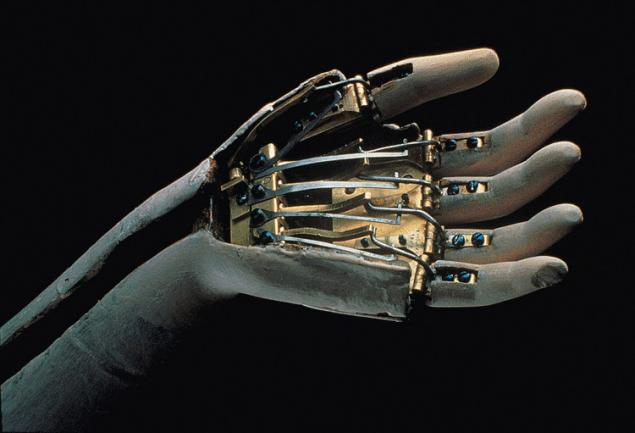
The emergence in Europe in the late eighteenth century "Groovy people" was associated with attempts to explain human nature in General. In the seventeenth century Descartes said about the person "as a mechanical machine, endowed with a soul". Philosophical discussions about the "mechanics of man" did not cease throughout the age of Enlightenment: philosopher Lamettrie said Descartes book "Man-machine", which became popular. Mechanical people represented a kind of reduced copies of living people. Clockwork toys were so popular that four decades replaced the traditional mechanical wonder of those years — pocket watch. In the nineteenth century, many watch manufactories had in the production of mechanical toys. The mechanical dolls was still interested in the audience, but fell and so lost status in 1880-ies the doll you could buy in a regular store. Fashion clockwork dolls was held in the beginning of the XX century, with the appearance in 1928, the first electric doll, robot, about a mechanical doll and not forgotten.

The artist is an automaton, created in 1773 and consisting of 2000 parts. He can draw three pictures: a portrait of Louis XV and his dog with the inscription "Mon toutou" (with FR. — my dog), the Royal couple Marie Antoinette and Louis XVI, as well as the scene with Cupid, managing chariot drawn by butterflies.
The mechanism consists of a system of Cams that control the movement of the hand in two dimensions, and are also responsible for the rise of a pencil. In addition, the automaton fidgets in his chair and occasionally blows the dust from the pencil.
This dog is the favorite dog of the French king Louis XVI, drawn by the automaton, and the profile of the king.
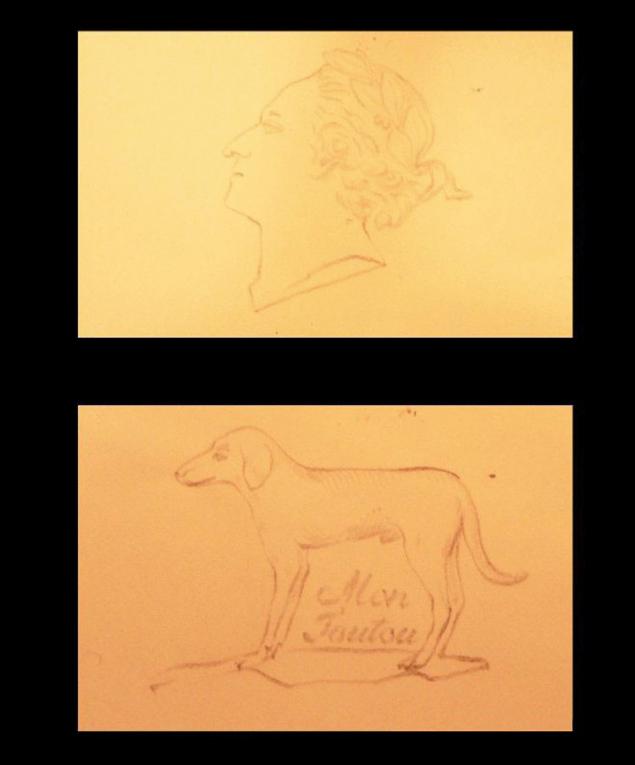
"The girl-musician" was made of 2,500 pieces and differs from the other automaton. This is a fragile young girl sitting behind a small flute body. The automaton has a mechanism that activates the ten fingers of a girl who actually plays the instrument.

Five different melodies that the automaton is able to play, was written by the son of the master, Henri-Louis Jaquet-Droz, who was not only also a skilled mechanic, but also a gifted musician. The mechanism of the "girl musician", quite complicated in construction, consists of four parts, which drives the fur tool, each hand of the musician, as well as activities such as heaving from breathing shoulders, the doll even "breathes" (you can see how the chest rises), the slopes of the body, eye movement and final reference. She emphasizes the movement of the hand during the game, able to look left and right, ending the game on a nod.
Mechanical Doll again appeared to the public in 2003, when Jaquet Droz put in as an exhibit in its pavilion at the watch fair in Basel restored "the Writing boy" (the kid wound up once a day, and look at the doll came running to the crowd). Interest in the toy was so great that it was decided to re-release "automatons" — there is someone who wants to collect toys that cost below the cost astronomical clock-bulbs, traditional a collectible object. "Automatons" is now as fashionable as a watch with lots of complications. In the current assortment of Jaquet Droz — the same "Writing boy", "Artist", "Musician" (watchmakers promise to come up with new, in particular the dancing doll). One doll will take about six months, and the price (depending on size and materials chosen) can reach a million francs.
source
Source: masterok.livejournal.com/1495215.html
Incredibly realistic Lobster from boxwood from Ryousuke Ohtake
How to get rid of the junk in the apartment


